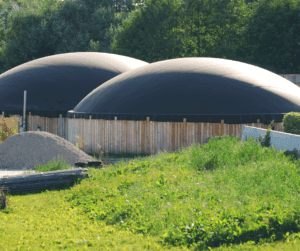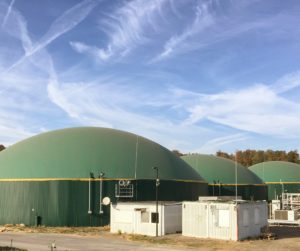At Promindsa, we understand the growing role of biogas as a renewable energy source in industrial, agricultural, and municipal sectors. Its ability to generate energy from organic waste makes it a key tool within a circular economy model. However, based on our technical experience, we know that one aspect requiring close attention is the management of hydrogen sulfide (H₂S) within the biogas production process.
This compound naturally appears during anaerobic digestion, especially when substrates rich in sulfur compounds are processed. Although it is a common occurrence, its presence can affect biogas quality and have implications for overall system operation.
The role of hydrogen sulfide in biogas
H₂S is a gas generated during the anaerobic decomposition of organic matter. Its concentration depends on several factors: the type of substrate, the conditions of the digester, and microbial activity. Its presence in biogas can impact various system aspects, such as equipment performance, material durability, and compliance with quality standards for the final gas.
In general, if H₂S is not properly controlled, corrective interventions may be necessary in the final treatment stages or in the energy utilization systems, adding operational complexity and costs.
Importance of H₂S removal
Eliminating hydrogen sulfide in the early stages of the process allows for optimized biogas use, while contributing to stable operation. When its concentration is reduced, methane content in the gas improves, equipment wear is minimized, and compliance with technical specifications becomes easier if the gas is intended for specific applications such as grid injection or use as fuel.
Moreover, from an environmental perspective, H₂S control improves overall process management by preventing the formation of secondary compounds during combustion and facilitating an operation that aligns more closely with sustainability goals.
Technical solution: control at the source
At Promindsa, we act directly in the anaerobic digester, controlling the generation of H₂S from the start. To do so, we have developed MICRONOX ON16, a product based on naturally sourced iron oxides and hydroxides that captures H₂S as it forms.
This approach offers several advantages. On one hand, it simplifies the downstream treatment of biogas, and on the other, it improves the quality of the digestate, as it does not introduce substances that negatively alter its composition. The product is easily integrated into the digester’s daily operation and does not interfere with the microbiological balance of the process.
A perspective of continuous improvement
The hydrogen sulfide and biogas relationship is a relevant topic in the optimization of anaerobic digestion plants. At Promindsa, we work from a technical standpoint, focusing on continuous process improvement and seeking solutions that bring efficiency, operational stability, and sustainability.
H₂S control should not be seen as a one-off response to a specific problem, but rather as an integral part of the overall energy recovery strategy. Through solutions like MICRONOX ON16, we aim to enable more efficient biogas management, adapted to current and future technical requirements.
Frequently asked questions about hydrogen sulfide and biogas
Is the presence of hydrogen sulfide in biogas inevitable?
In most cases, yes. Hydrogen sulfide is generated during the anaerobic digestion of organic matter containing sulfur compounds. Its appearance is a common phenomenon in biogas production systems, although its concentration varies depending on the substrate type and process conditions.
What are the advantages of removing H₂S at the digester stage?
Removing hydrogen sulfide directly in the digester helps reduce its concentration at the source, simplifying the downstream treatment of biogas. This approach improves gas quality, protects equipment and infrastructure, and optimizes the overall performance of the system.
How does hydrogen sulfide affect the digestate?
When using mineral-based solutions like MICRONOX ON16 for H₂S control, the digestate is not negatively affected. In fact, its stability and composition may improve, making it suitable for valorization as an organic fertilizer.
Is it possible to reuse or recover hydrogen sulfide from biogas?
There are technologies that allow H₂S to be converted into useful byproducts, such as elemental sulfur. These options are more common in large-scale industrial systems. In other contexts, the most practical solution is usually safe neutralization within the digestion process itself.








